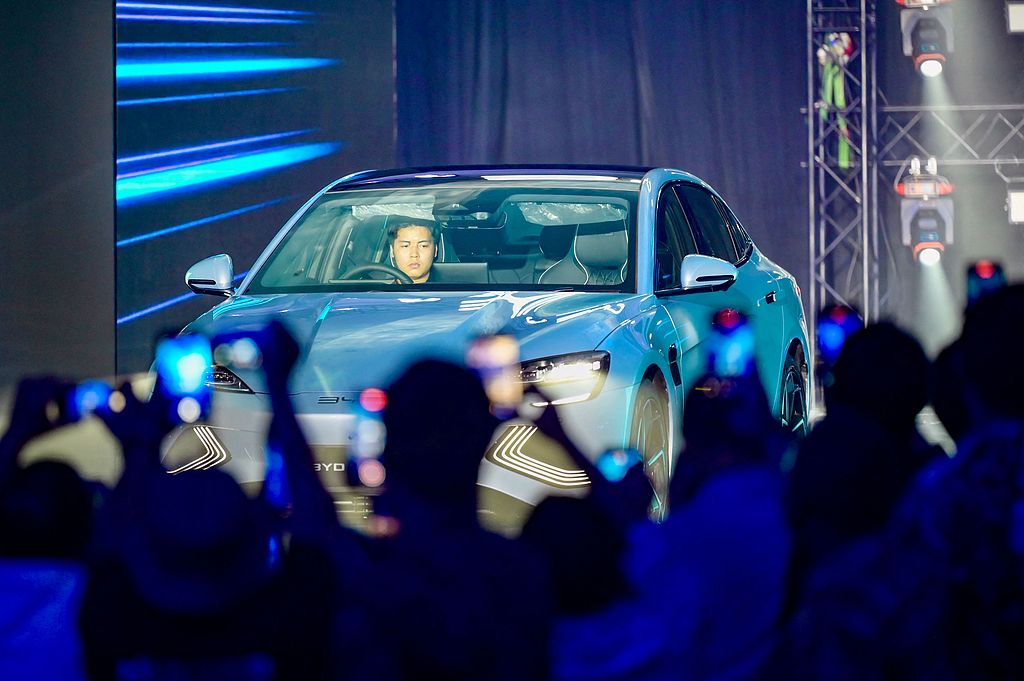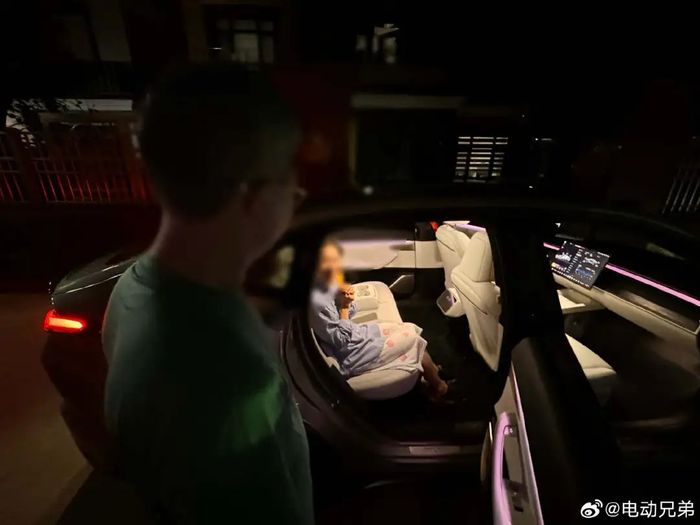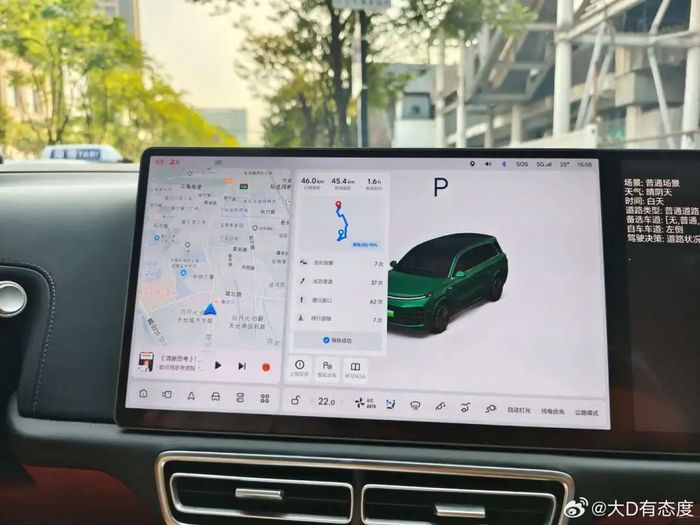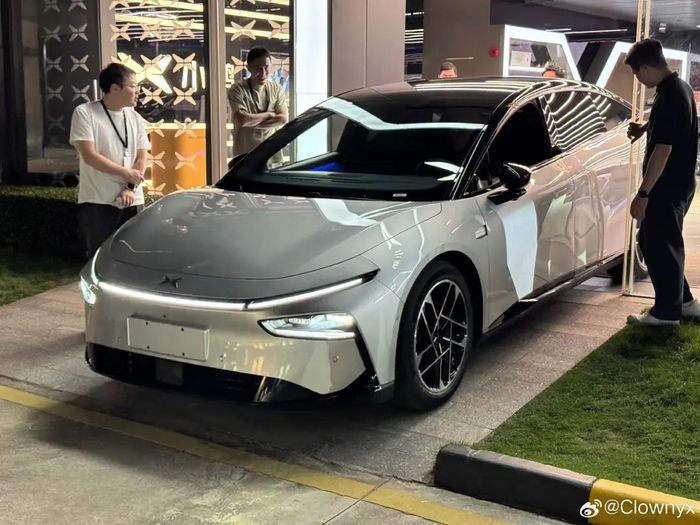Xingfu Town, a small town in Binzhou, Shandong Province, spans only 51 square kilometers and has a permanent population of 10,000. Every New Year, NIO founders Li Bin and Qin Lihong record videos to send New Year wishes to local users. Over 600 NIO car owners reside here. They purchased more than 800 NIO cars, guided by existing owners through a mentorship model. These veteran owners not only attract new customers but also engage with the CEO in online discussions. In 2024, car company CEOs will connect directly with users online. Li Bin enjoys live streaming and has even collaborated with Xpeng CEO He Xiaopeng. Lei Jun, known as an “online model,” actively posts on Weibo, livestreams, and participates in racing events. Even Wei Jianjun, the chairman of Great Wall Motors, has joined Weibo and often engages in live streams. However, these CEOs often express caution in their online statements. In contrast, veteran owners from brands like NIO, Li Auto, and AITO communicate more simply and directly. They clearly express their love for a brand and can strongly criticize specific products. In marketing, they are known as KOCs, corresponding to KOLs. With the rise of new energy vehicles on social media, users label brands with KOC and KOL tags. For example, terms like Li Auto KOC, NIO KOC, and Xiaomi KOC illustrate strong connections between brands and KOCs/KOLs. KOCs have smaller fan bases and influence. They typically impact friends and followers, driving consumer behavior. Their strength lies in targeting specific audiences. If a brand collaborates with a KOC, the cost is lower. On September 25, a third-party agency, New Channel Observation, released a KOC/KOL ranking for new energy vehicles. One criterion for selection was “clear brand preference in public perception.” They classified KOCs and KOLs by brand using social media data over a set period. A featured car reviewer noted that KOCs have a strong value alignment with their preferred brands, acting as “spiritual employees” of the company. KOC statements clash between different brands. This reflects a conflict of values at the company level. Brands do not aim to persuade each other. They seek to attract more users in the middle ground. They want these users to join their camp. This is the “traffic code” of the automotive opinion ecosystem.
KOC’s Side A: Old Car Owners and Promoters 2019 was NIO’s toughest year. Li Bin faced funding challenges. Still, he maintained strong confidence in NIO. He believed NIO could overcome difficulties. From September 2019, NIO’s monthly orders began to rise. Old car owners drove these orders. “Our users trust us more than our frontline colleagues. Our colleagues trust us more than outsiders,” he said. At that time, old car owners paid for outdoor ads. They recommended NIO to friends and family. They promoted NIO in their social circles. In the first quarter of 2020, NIO delivered 3,838 new cars. Orders from old users accounted for 69%. This led to Anhui state-owned assets investing 7.2 billion in NIO. This case exemplifies the strong emotional bond between KOCs and car brands. The actions of NIO’s old car owners reflect typical KOC characteristics. @ElectricBrothers is a well-known NIO KOC. He ranked first on the NIO KOC/KOL list released by New Channel Observation. On September 28 this year, he received his Le Dao L60. After driving it home past 10 PM, he shared a photo with his neighbors. They came downstairs with their families to see the car before returning home.
From Weibo @Electric Brothers, he invited neighbors to see the newly delivered Lido L60. This rarely happened during the era of fuel cars. Now, in the era of new energy vehicles, such actions are increasing. Early car owners become KOCs and KOLs. They build special connections with car brands, company founders, executives, and people around them through their vehicles. Li Auto and Xpeng also have such “old car owners.” In 2008, Li Xiang and three other entrepreneurs appeared on CCTV’s “Dialogue.” A viewer was impressed by Li Xiang. He now goes by the Weibo name “Big D with Attitude.” At that time, he was also starting a business. Later, Li Xiang left Autohome to found Li Auto. Big D became one of the first owners of the Li ONE. He trusted Li Xiang. From the launch of the Li ONE to accepting orders, he only had one test ride. He quickly decided to place his order. To him, this was a car and a work of art by Li Xiang. As one of the first Li ONE owners, he shared his experiences in brand communities and on social media. He also formed the earliest Li Auto car owner group in Jiaxing with friends. Many in the group became Li Auto owners through his recommendations. He organized a comparison test drive for the Ideal ONE with some ideal car friends. During the classic automatic emergency brake test, they couldn’t find a suitable object for comparison. They grabbed a piece of hard cardboard and wrote “Li Xiang” in big letters on it. D even dressed the cardboard to make it look more realistic. However, some in the car friend group couldn’t take it anymore. They printed a colorful cardboard cutout of Li Xiang and sent it over. The test completed successfully, and the video of “crashing into Li Xiang” went viral online. In June 2022, the Ideal L9 launched, and D became an owner. He still keeps his Ideal ONE. Many like him own two or more models of the same brand. Another Ideal car KOC, @IdealClassmates-Night, is among the first owners of the Ideal ONE, L7, L8, L9, and MEGA. On November 27, 2023, Li Xiang thanked D in a Weibo post. He praised D as “the biggest owner who helped Ideal Auto grow in 2023.” The reason was the autumn of 2023, when Ideal Auto held a strategy meeting at Yanqi Lake in Beijing. D, as a user, confronted 300 management members for over two hours, harshly addressing Ideal Auto’s critical issues. His input directly changed Ideal Auto’s primary strategy. At the strategy meeting, Li Auto upgraded “leading smart driving” to its core strategy. The company increased research and development investment.
From Weibo @大D有态度: Experiencing vehicles and features with fellow car enthusiasts is their norm. NIO, Li Auto, and Xpeng have nearly ten years of development history. The three founders experienced the first wave of China’s internet boom. Their entrepreneurial style reflects their internet backgrounds. Li Bin, Li Xiang, and He Xiaopeng, along with Lei Jun, belong to the same group of new car makers. Unlike the latter, the first three maintain closer ties with early owners and KOCs. These connections include owner communities, offline meetings, and social media. Each company invites early owners and KOCs to review new products and features before launch. They make changes based on reasonable feedback. Li Xiang often interacts with KOCs on social media. Li Bin visits old owners in various cities every year. He also participates in reviews with local owners during NIO Day. He Xiaopeng, a typical “engineering guy,” has increased his contact with old owners and KOCs in the past two years. NIO promptly shares financing updates and major event statements in the owner community. This allows owners to receive information quickly. Li Bin, Qin Lihong, and the management of various NIO departments are active in the community. Xpeng’s community resembles an extension of “engineer culture.” The first P7 owner, @Clownyx, noted that if they report product issues in Xpeng’s community, the response is quick. A suggestion made one evening might get resolved by the next day. Electric vehicle enthusiast considers himself a Xiaopeng owner. His organization bought Xiaopeng G9 and G6. He personally test drove P5, X9, and P7i for a long time. He finds Xiaopeng strong in smart driving. The smart system updates quickly. Before this year’s May Day holiday, XOS pushed version 8904. After the holiday, it upgraded to 8905. This shows Xiaopeng continues system updates during holidays. Xiaopeng P7 launched in April 2020. Clownyx works in Guangzhou. He feels connected to Xiaopeng, also based in Guangzhou. At that time, few models were available. After ruling out Tesla Model 3, he chose Xiaopeng P7 as his first electric vehicle, switching from a Mercedes E-Class. Later, he bought a G9. Traditionally, people think buying an electric vehicle reduces travel range. Pure electric cars often face charging limitations. Clownyx’s experience contradicts this view. Friends in Foshan and Shunde invited him for meals. Driving a fuel car cost him nearly a meal’s worth of gas. But with an electric car, the cost was only a breakfast. He runs a small business. Driving a Mercedes E-Class made sense for brand and finances. Switching to Xiaopeng P7 remained logical economically. After he got the P7, many friends asked him about changing cars. He encouraged them to try electric vehicles, not just Xiaopeng. He has influenced many to buy Xiaopeng cars. For instance, in early 2023, he and a colleague drove his Xiaopeng G9 to Hangzhou for work. XNGP eased their driving burden on the road. The colleague bought a G9 after returning from the business trip.
@Clownyx drives a Xiaopeng G9 for work. New energy vehicles reduce driving costs but create new issues. He faces price volatility as the biggest challenge. He bought his Xiaopeng P7 for 300,000 yuan (42150$). Now, many models are available. The latest P7+ has a pre-sale price just over 200,000 yuan (28100$). The G9 faces similar price fluctuations. Almost all early new energy vehicle owners deal with this problem. “From a consumer’s perspective, everyone dislikes such drastic price changes. I run a business. I understand it from an entrepreneur’s viewpoint. If I were He Xiaopeng or a leader of another new brand, I would make similar choices based on market competition, raw material price changes, and business survival.” He says the conflict is unavoidable. On the night of October 14, He Xiaopeng announced the pre-sale price of the P7+ at the Paris Auto Show. He ordered one that night. Many of his relatives are interested in Xiaopeng. He plans to take them for a dynamic test drive of the P7+.
On Weibo, @Clownyx shared his experience. After a test drive with friends, they gathered at the Xiaopeng store to watch the P7+. @硬神996 works as a lawyer in Beijing. He is also a well-known Xiaopeng owner. Attracted by Xiaopeng’s smart driving features, he bought a fully equipped Xiaopeng G9 after his experience. He later purchased a Xiaopeng G6 and another top-spec G9. Now, his whole family drives Xiaopeng cars. In stock market terms, he heavily invests in Xiaopeng. Even during tough sales periods, his confidence in Xiaopeng remains strong. He jokes that as long as Xiaopeng focuses on technology, it will succeed. With over a decade of experience as a bankruptcy lawyer, he believes that tech companies can recover even after financial crises. Unlike Li Auto and NIO, the KOCs associated with Xiaopeng mainly come from automotive backgrounds. For example, @张抗抗KK holds a PhD from Tsinghua University and owns both a Xiaopeng G6 and G9. On New Year’s Day, when the Xiaopeng X9 launched, he drove one from Guangzhou to Shanghai for a long test. @CarEngineer, a software engineer in the new energy sector, creates content focused on Xiaopeng’s technology. On New Year’s Day, @张抗抗KK drove the newly launched Xiaopeng X9 overnight from Guangzhou to Shanghai. A unique feature of the new energy vehicle era is that KOCs and early adopters often own multiple models of the same brand. Strong upgrade policies and brand recognition encourage this. However, they do not reject other brands. For instance, @Clownyx also owns a Li Auto vehicle. His company’s reception car is a Denza D9. Partner @小特叔叔 has purchased NIO ES8, ET5, and LeDao L60, and he also owns a Li Auto MEGA. @大D有态度 is a Leap Motor owner. @电动知士大雨 is a NIO owner whose organization has a Xiaopeng G6. He highly appreciates NIO’s battery swapping system and Xiaopeng’s smart driving technology in collaboration with Huawei.
KOC’s B-side: Igniting Emotions For a new energy brand, KOC represents car owners. Their skills drive new users to recognize the product. This collaboration boosts positive market exposure. Working with KOC is a win-win choice. However, deep ties between the brand and KOC carry risks in the current public opinion environment. Ideal MEGA serves as a typical example. Before its launch, Ideal invited KOC to participate in internal evaluations. They claimed, “Minimum monthly sales of 8,000 units,” “World’s fastest charging speed,” and “Disruption of the high-end car market.” Some KOC even urged buying Ideal’s stock, anticipating a price surge post-launch. After its March 1, 2024 launch, Ideal MEGA’s performance fell short of expectations. This event highlights how new car makers must guide KOC to convey product messages effectively and manage public expectations. On social media, KOC from NIO and Ideal engage in sarcastic exchanges. This rivalry affects user perceptions of both brands, especially since both target the high-end market. Whether NIO KOC or Ideal KOC, their actions may not reflect brand directives. Yet, their clear brand affiliations link these exchanges to the brands. At least two interviewed users expressed disdain for some KOC’s extreme comments on social media. This negativity made them hesitate about purchasing certain brands, leading them to consider alternatives. User opinions indicate that both current and potential car owners may split into two factions: “strong supporters” and “strong detractors” due to the extreme comments from KOCs. A notable event occurred before the launch of the Xiaomi SU7. Renowned car reviewer @Chen Zhen expressed differing views on some designs during his test drive. His remarks quickly divided public opinion into “supporters” and “opponents,” with the topic trending on Weibo. Supporters argued that he spoke the truth. They noted that he had no vested interest in Xiaomi and shared his experiences and opinions. Opponents claimed he accepted payments from other car brands to criticize the Xiaomi SU7. Despite Vice President Li Xiaoshuang’s clarification, the controversy persisted. A debate between Chen Zhen and KOC @Jin Jian Dao on a live stream gradually calmed the situation. More new energy vehicle brands now recognize the importance of public opinion. Driven by social media, many company leaders, including industry veterans like Great Wall Motors Chairman Wei Jianjun and Changan Automobile Chairman Zhu Huarong, engage online through images, short videos, and live streams. Many executives also speak on social media about their business areas. They are called “KOE.” Their communications cover brand, product, and technology aspects, serving as an effective supplement to KOC and KOL remarks. Since the beginning of this year, China’s new energy vehicles (NEVs) have seen monthly retail penetration rates exceed 50% for three consecutive months. However, NEVs still hold a low share among passenger cars. This indicates significant room for conversion between NEVs and fuel vehicles. More people will need useful information about NEVs, rather than extreme emotional responses.






